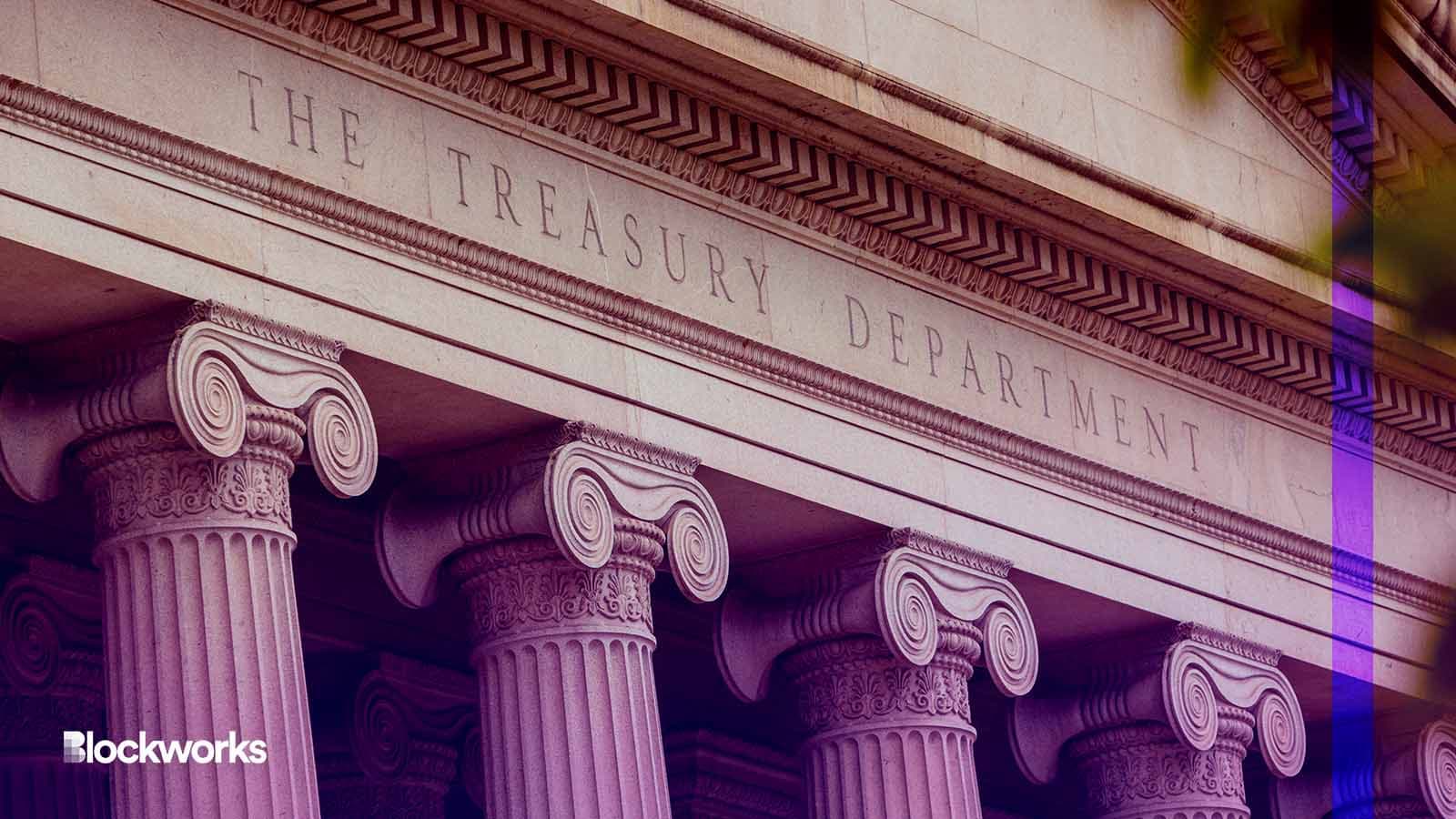Treasury Review Acknowledges Traditional Finance, Not DeFi, Preferred by Criminals
Treasury review pushes for increased government supervision over DeFi technology

christianthiel.net/Shutterstock modified by Blockworks
The US Treasury released a review on April 6, warning that DeFi could pose a risk to national security. The report laid out six suggestions that it believes will make DeFi harder for criminals to exploit. It pushed for both DeFi developers and the US government to “promote innovation that seeks to mitigate the illicit finance risks of DeFi services.”
It also noted however that the majority of criminals use fiat currency — not digital assets — to conduct illicit transactions, stating “money laundering, proliferation financing, and terrorist financing most commonly occur using fiat currency or other traditional assets as opposed to virtual assets.”
Justin Slaughter, policy director at Paradigm, tweeted that the report seemed “optimistic” that the DeFi industry can help to address criminal financial activities, noting that it shows the department knows that DeFi “isn’t going away.”
Increasing regulation around both anti-money laundering (AML) and countering the financing of terrorism (CFT) laws are just one of six suggestions listed by the department. When looking at the vulnerabilities of DeFi, the report stated the “lack of compliance [of AML/CFT] may be due in part to gaps in common views between industry and regulators of how relevant laws and regulations, including securities, commodities, and money transmission regulations, apply to DeFi services.”
Yaya Fanusie, director of anti-money laundering and cyber at the Crypto Council for Innovation, told Blockworks via email that the “Treasury says that even if a service is truly decentralized, activity still could require AML/CFT compliance. But it does not explain how to implement that compliance when there’s no concrete responsible party. And the report admits that not all types of DeFi services will fit under BSA obligations. What will likely have to happen is an unpacking of the different service types (that the report delineates on p.10) and identifying when AML/CFT compliance is required.”
The review also suggested that the innovation of compliance solutions by DeFi entities “potentially bolster the accessibility, transparency, and security of the U.S. financial system…most tools remain too nascent for definitive conclusions on their promise.”
For the Treasury, this indicates that the government should offer further supervision into the development of DeFi technology. It could also mean that the laws currently in place may need further expansions in order to properly safeguard “the U.S. financial system from all manner of threats.”
In order to do that, the report stated that the Bank Secrecy Act — which was put in place in the 1970s to enforce financial institutions’ assistance in helping the government prevent money laundering — should be expanded upon so that DeFi services are covered under the Act — an inclusion could lead to friction between DeFi entities and the US government.
The department further suggested that the nature of DeFi — in that it transcends borders — could lead to violations of the AML/CFT or just a lack of enforcement, because other countries may not have the same laws in place. To counteract potential international issues that could arise from different laws in different regions, the Treasury said that the government should continue to push for international standards in DeFi.
“While the assessment does, at times, demonstrate a sophisticated understanding of the DeFi landscape, it evidences a tension between the idea that decentralization is irrelevant in determining compliance obligations under existing AML/CFT controls and the idea that decentralized protocols are a novel tool unanticipated by existing frameworks,” Miller Whitehouse-Levine, CEO of the DeFi Education Fund, said in an email. “Those frameworks were developed based on how the global economy worked in the 1970s and are predicated on the assumption that transactions must occur through custodial financial intermediaries, an assumption that is no longer valid.”
The U.S. is not the only country keen to see a more multilateral international move. An ECB supervisory board member has also pushed for countries to work together on regulation for the larger cryptocurrency sector.
The Treasury’s review said more testing and “responsible” innovations are necessary within the space both from developers and policymakers as regulation is proposed and enforced. Grants and tech sprints are two suggestions within the report, though there aren’t clear details on what those would look like or how the grants would help development.
Get the news in your inbox. Explore Blockworks newsletters:
- The Breakdown: Decoding crypto and the markets. Daily.
- 0xResearch: Alpha in your inbox. Think like an analyst.






